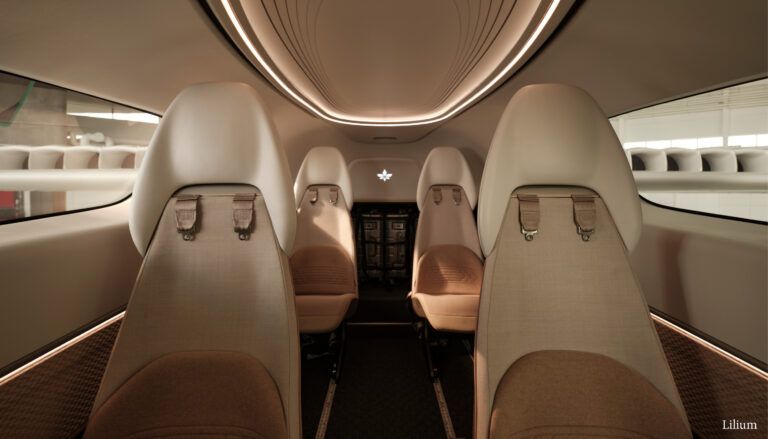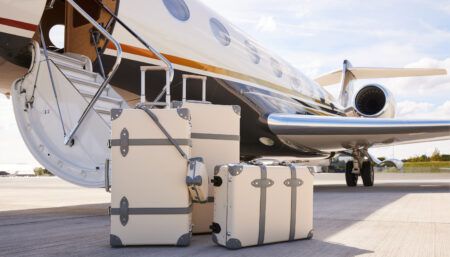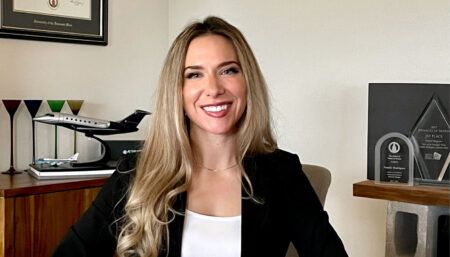Lilium is making good progress with its eVTOL jet – prioritising beautiful simplicity in everything from the engineering to the interior and overall customer journey.
Everything about the Lilium Jet is designed for elegant simplicity. In that spirit, here are the key facts. The aircraft is an all-electric vertical take-off and landing (eVTOL) jet, offering up to six seats, zero operating emissions, a maximum range of 175km (109 miles) and a cruising speed of 248km/h (154mph). While a lot of eVTOLs are meant for short urban hops, the Lilium Jet is more for intercity and regional journeys.
Lilium is targeting first flight for the aircraft in early 2025, and then the first customer deliveries in 2026. A full-scale mock-up was displayed for the first time at EBACE 2024. Alberto Caruso, head of design and brand at Lilium, explains that the elements shown in the mock-up are close to production.
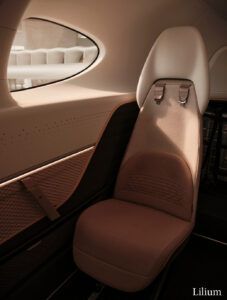
The cabin is 3m (9.8ft) in length, 1.45m (4.8ft) tall and 1.5m (4.9ft) wide. “It’s really getting close to a business jet feeling,” says Caruso. “The long cabin derives from the fact that we wanted to design for six individuals with a very good pitch of 34in. We know that when we enter the market, that’s going to be a premium.”
The aircraft has a flat floor with seat tracks to enable flexibility of configuration, which Caruso believes to be another differentiator. For shuttle operations the cabin can accommodate six people with seat pitch comparable to premium economy, or four people with a seat pitch equivalent to business class, Lilium says.
A club-style layout leaves enough room for middle console tables and other amenities installed via the seat tracks. In fact, owners can customise the layout completely – with amenities such as a beverage module, bag storage, drawers or a lockbox.
An EMS layout is possible, with a stretcher, storage and two seats for medical attendants. Finally, all seats can be removed for a cargo configuration. The airframe has a separate cockpit, and a dedicated area for up to six pieces of luggage.
Cocoon feel
Caruso explains that the aircraft was designed from the inside out. “When you enter, you immediately feel embraced and cocooned in a way, because it kind of has a capsule feel,” he says. “Everything wraps around, there are no harsh breaks, so you don’t feel you’re in a tube like typically with a helicopter or small jet.”
The customer experience was the focus from the outset, Caruso notes: “Our approach was, as we are doing something that doesn’t exist yet, how do we get the customer familiar with this type of product?”
The design aims to create a warm, cocoon-like feel to help passengers feel comfortable with this new form of transportation. There are also some grab handles, perhaps with a little automotive influence, again to help with the feeling of psychological support. “It’s inclined to this new way of travelling,” explains Caruso. “We know that travel is not always calm and relaxing. In some phases of flight, take-off or landing, you might like to have something to grab to reassure you.”
There are wraparound windows designed to give a panoramic view. “Visibility was another important element to enhance the experience as we are dealing with a new way of transportation that people need to get familiar with,” says Caruso.
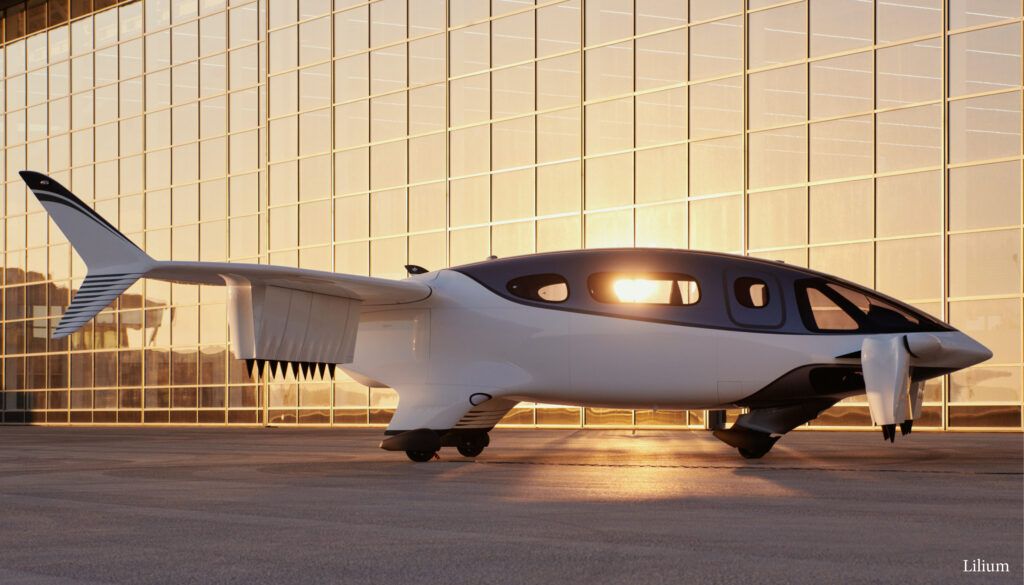
Our friends electric
The windows are being developed with Saint-Gobain Aerospace. Lilium has a strategy of working with established aerospace suppliers to support certification and scaled production. It selected Diehl Aviation to collaborate on the cabin sidewalls, ceiling panels, partitions, luggage compartment and floor, and cockpit cabin lining.
An LED lighting system will be offered, including a control unit for customising the lighting mood. Another important element is the dome ceiling. “It’s super important to expand the feeling of space,” says Caruso. “When we come to customisation, we’re going to craft the overall visual experience with the light colours, the pattern, and the graphic material that we will apply.”
The dome shown in the mock-up at EBACE features a pattern of expanding concentric circles. “But the customer will have the chance to apply their own design,” comments Caruso. “This is going to be an important element of customisation. The other elements that are important are the treatment of the surfaces so you don’t see breaks; everything is feeling organic.”
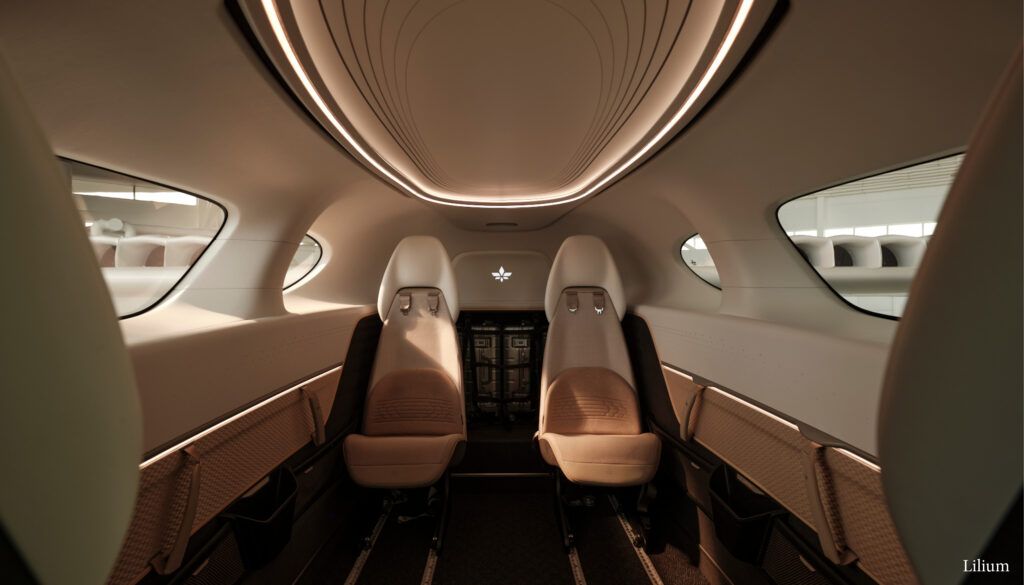
Synthetic leather
The sculpted-look sidewalls are finished in a synthetic leather sourced from a supplier that is “very focused on sustainable production processes,” explains Caruso. He adds that synthetic leather was chosen because “sustainability is possible, and also an important element is durability”. The material is easy to clean and maintain, he says: “We’re trying to go for sustainable material but we’re cautious about durability. We have to make sure it can be reused and reused without waste.”
This all ties in with the profile of the kind of customer most motivated to adopt zero-emission flight. Caruso stresses that it’s not about “just going for the green material for the sake of going green”, but that balance is important when there are so many factors that influence sustainability. These include weight, the provenance of raw materials, production processes, wastage, durability and so on.
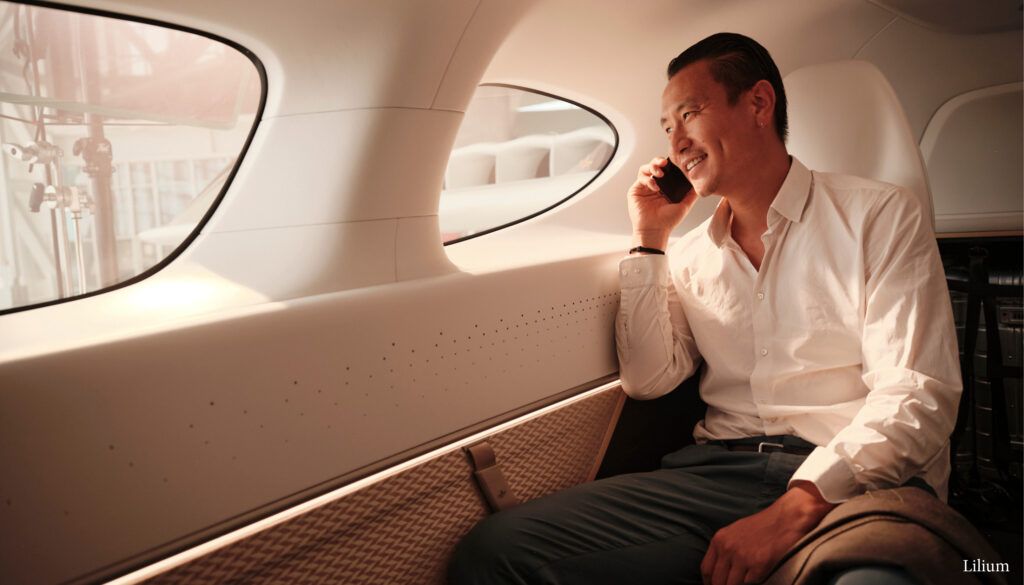
A key feature of the design are the large windows, set back considerably from the seats with deep shelves that reveal the thickness of the sculpted sidewalls between the cabin’s structural pillars. The sidewalls are thick because they house the batteries – five packs on each side. “Shaping the sidewalls with the engineers allowed us to get these big windows, because we don’t have intermediate pillars,” says Caruso. “This is the big difference to traditional airframe design. Having this new layout with the batteries in the sides introduced a completely new way of designing a fuselage.”
The shelves provide a kind of natural armrest but the team has worked to create other areas for people to put small items instead, where they won’t slip around or ruin the simple clean aesthetic, or the view.
“We’d like to keep the top of these sidewalls as clean as possible,” says Caruso. “We’d rather see functional elements on the side, so we are designing pockets to contain tablets, magazines, books. We’d rather have one element in the middle that can be used for beverages. In the future, we might also need charger ports, USBs. This is going to be the real functional area.”
Seat design
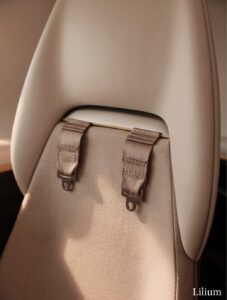
Lilium chose Expliseat as its design and build partner for the custom pilot and passenger seats. “The seat is based on a very rigid and constrained architecture because it’s a crashworthy seat,” says Caruso. “Basically it’s a derivative from helicopters, where you have this integrated load absorption system. It can save your life because it’s designed to sustain the load in case of a crash or harsh landing. It’s very lightweight, because it will be based on a carbon fibre and titanium material, but has been shaped around customers’ needs. Even though we have a very rigid architecture, we worked extensively on the shape of the foam, to make sure the body is well supported.”
Overall, Caruso believes that the quality of the design and flexibility of the layout create unique selling points. “Taking off and landing vertically will be a common thing because everybody will catch up fast,”he comments. “The real differentiator is going to be our design and customisation.”
This feature was written by Izzy Kington and first published in the September/October 2024 edition of Business Jet Interiors International. Click here for the full version.


